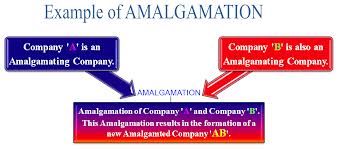Accounting for Amalgamations
Purpose and Scope: This statement deals with accounting for amalgamations and the treatment of any resultant goodwill or reserves. It does not deal with acquisition by one company of the whole or part of the shares, or the whole or part of the assets, of another company in consideration for payment in cash or by issue of shares or other securities in the acquiring company or partly in one form and partly in the other.
The distinguishing feature of such an acquisition is that the acquired company is not dissolved and its separate entity continues to exist.
Types of Amalgamations
An amalgamation may be either in the nature of merger or in the nature of purchase. An amalgamation is considered as, in the nature of merger, if it satisfies all the following conditions. If it does not satisfy any one or more of the following conditions it is said to be in the nature of purchase.
- All the assets and liabilities of the transfer or company become, after amalgamation, the assets and liabilities of the transferee company.
- Shareholders holding not less than 90% of the face value of the equity shares of the transferor company (other than the equity shares already held therein, immediately before the amalgamation, by the transferee company or its subsidiaries or their nominees).
- The consideration for the amalgamation receivable by those equity shareholders of the transferor company who agree to become equity shareholders of the transferee company is discharged by the transferee company wholly by the issue of equity shares in the transferee company, except that cash may be paid in respect of any fractional shares.
- The business of the Transferor Company is intended to be carried on, after the amalgamation, by the Transferee Company
- No adjustment is intended to be made to the book values of the assets and liabilities of the transferor company when they are incorporated in the financial statements of the transferee company except to ensure uniformity of accounting policies.
The Pooling of interest method of accounting is followed for amalgamation in the nature of merger whereas the purchase method is followed for amalgamations in the nature of purchase.
Pooling of Interests Method
- While preparing the transferee company’s financial statements, the assets, liabilities, reserves (capital, revenue or revaluation reserve) of the transferor company should be recorded at their existing carrying amounts and in the same form as at the date of the amalgamation.
- The balance of the Profit and Loss Account of the transferor company should be aggregated with the corresponding balance of the transferee company or transferred to the General Reserve, if any.
- In case of conflicting accounting policies, of the transferor and the transferee company, a uniform set of accounting policies should be adopted after the amalgamation and the effects on the financial statements of any changes in accounting policies should be reported in accordance with Accounting Standard (AS) 5 ‘Net Profit or Loss for the Period, Prior Period Items and Changes in Accounting Policies’
















